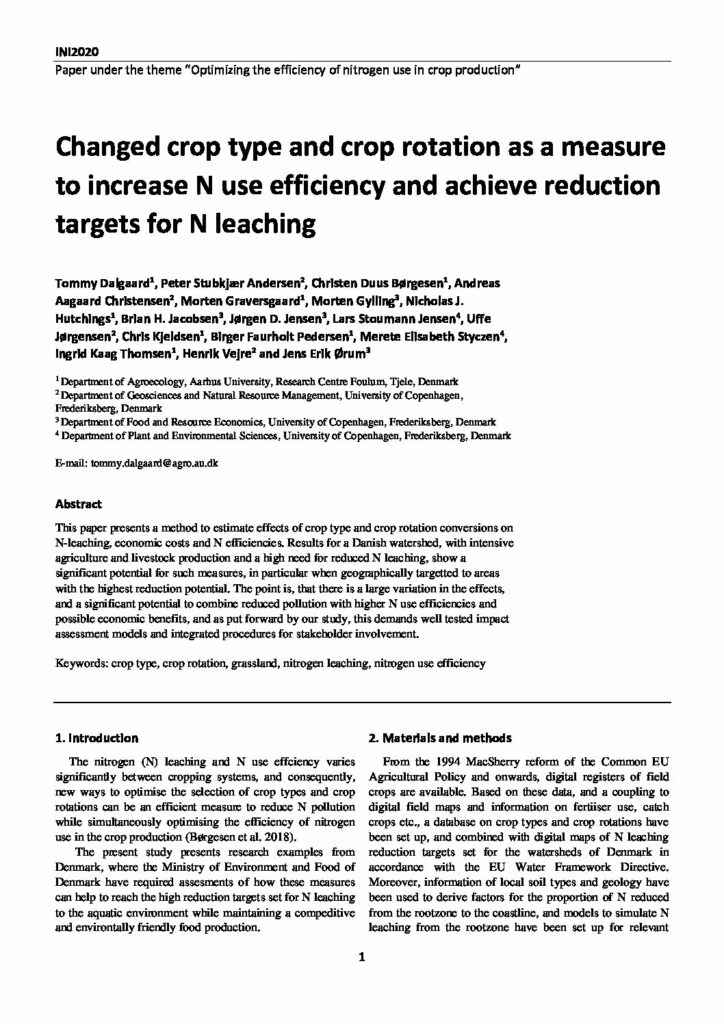Changed crop type and crop rotation as a measure to increase N use efficiency

This paper presents a method to estimate effects of crop type and crop rotation conversions on N-leaching, economic costs and N efficiencies. Results for a Danish watershed, with intensive agriculture and livestock production and a high need for reduced N leaching, show a significant potential for such measures, in particular when geographically targetted to areas with the highest reduction potential. The point is, that there is a large variation in the effects, and a significant potential to combine reduced pollution with higher N use efficiencies and possible economic benefits, and as put forward by our study, this demands well tested impact assessment models and integrated procedures for stakeholder involvement.
The nitrogen (N) leaching and N use effciency varies significantly between cropping systems, and consequently, new ways to optimise the selection of crop types and crop rotations can be an efficient measure to reduce N pollution while simultaneously optimising the efficiency of nitrogen use in the crop production (Børgesen et al. 2018). The present study presents research examples from Denmark, where the Ministry of Environment and Food of Denmark have required assesments of how these measures can help to reach the high reduction targets set for N leaching to the aquatic environment while maintaining a compeditive and environtally friendly food production.
